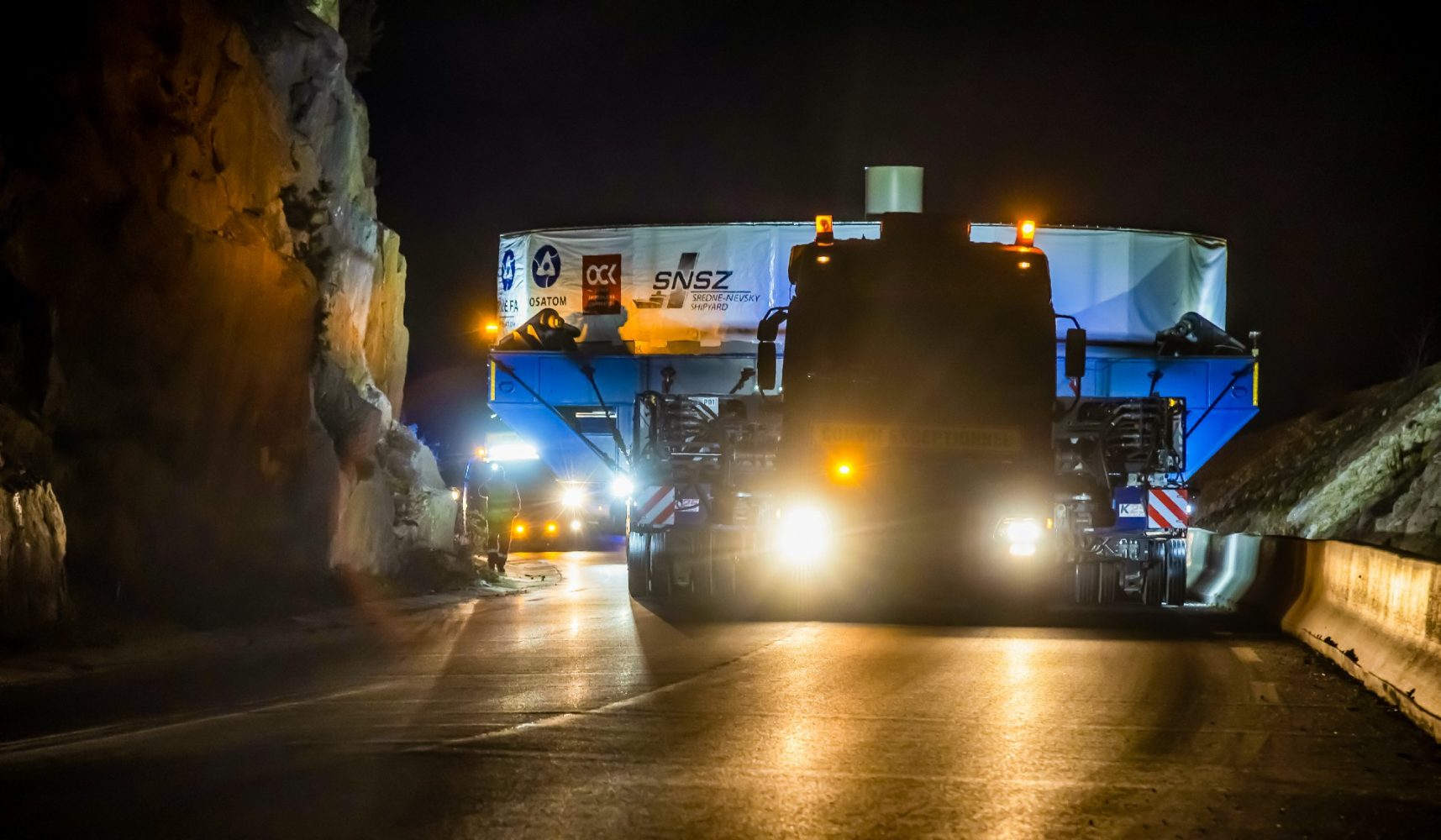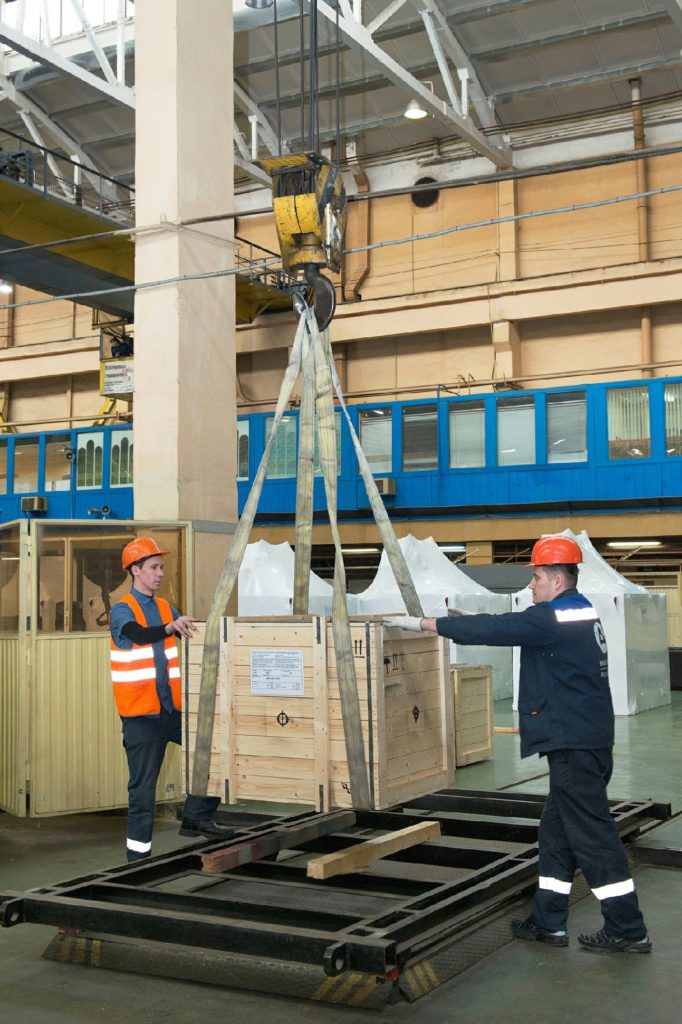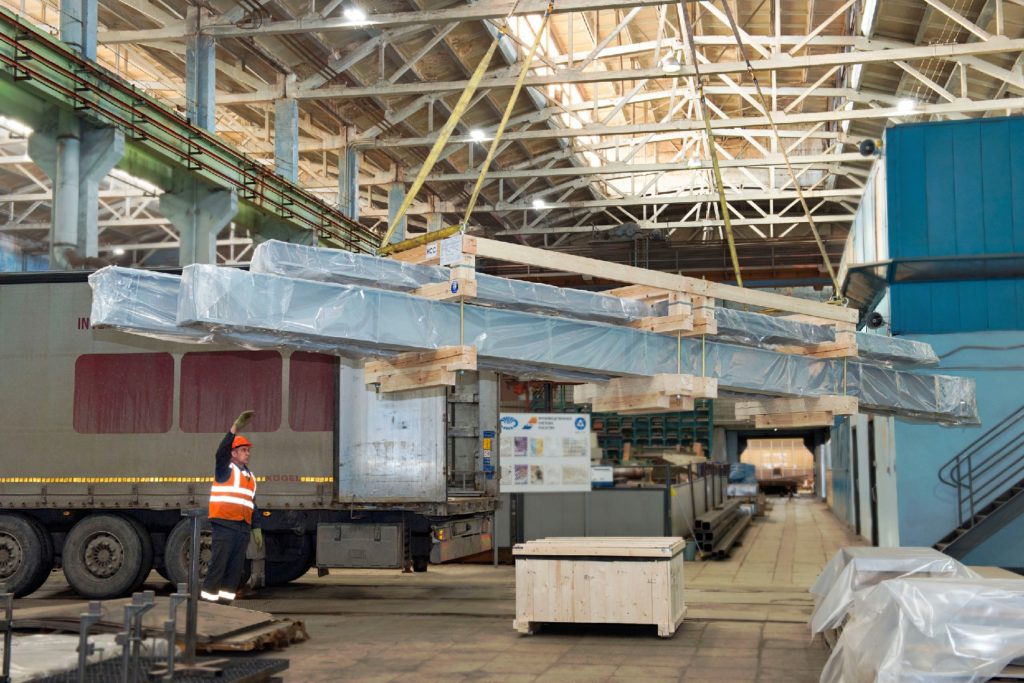
Removing Heat from Tokamak
back to contentsFebruary witnessed two events related to component supplies for the International Thermonuclear Experimental Reactor (ITER) project from Russia. On February 10, a PF1 poloidal field coil arrived at the ITER construction site. On February 13, D. Efremov Research Institute of Electrophysical Equipment (NIIEFA, part of Rosatom) sent this year’s first shipment of Russian-made equipment for ITER.
Coil arrived
“We are glad Russia has done a good job with the manufacture and delivery of the poloidal field coil. Superconducting magnets for ITER require an unprecedented precision,” ITER Director General Pietro Barabaschi said at the ceremony dedicated to the coil’s arrival.
“The best Russian professionals were involved in the production of the PF1 coil. They developed advanced technology, processes and production solutions. The successful completion of the PF1 coil production and its delivery to the reactor construction site shows clearly that Russia has been, and will continue to be, an integral part of the ITER project and, more generally, global thermonuclear research effort,” Rosatom’s Director General Alexey Likhachev pointed out.
Weighing 200 tons, the 9-meter round PF1 coil is one of the six poloidal field coils in the magnet system designed to confine plasma inside the thermonuclear reactor. The coil’s journey started on the first of November last year when it was shipped from the Sredne-Nevsky Shipyard in Saint Petersburg to the French port of Berre. Then it was loaded onto a special flatbed trailer to be escorted to Cadarache via a special route dedicated for super-heavy, oversized cargoes.
Final shipment of electrical equipment
This year’s first shipment is also the final batch of electrical equipment that NIIEFA manufactured for the ITER project. The shipment included high-current busbars and switchgear components for the power supply system of superconducting poloidal field coils and the central solenoid.
NIIEFA is a leading contractor for the production of electrical equipment for the power supply systems of the ITER magnet windings. It consists of three equipment groups and a control and monitoring system.

The first group comprises switchgear equipment for the protective power output system. Plasma particles in the tokamak are confined by a powerful magnetic field that is induced by electromagnetic coils. Their windings are made of superconducting strands having zero electrical resistance at cryogenic temperatures. They are designed to carry an extremely strong current of 70 kA to create magnetic fields. In case of a technical failure, though, there is a risk the windings of the ITER magnet system can switch from a superconducting state to a normal resistive state. If this happens, hundreds of tons of superconductors will overheat immediately and may ‘burn’, and the reactor will be damaged heavily. “Our protective power output system ensures the safe operation of the ITER unit. If a technical failure occurs, it releases, quickly and safely, the energy accumulated in the coils of the tokamak’s magnet system, protecting them from temperature and high voltage effects,” explains Igor Rodin, Deputy Director General for Thermonuclear and Magnetic Technologies and Director of Sintez R&D Center at NIIEFA.
This group also includes on-line current switching systems initiating the discharge that creates plasma in the tokamak at the beginning of each operating cycle.

The second group consists of powerful high-current busbars that supply power to the superconducting coils. “These are the most expensive components provided for in the supply contract,” says Maxim Manzuk, Head of High-Current Switchgear Department at NIIEFA. In total, the busbars are 5 km long and, together with supports, weigh 900 tons. They are water-cooled and designed for continuous operation at direct currents reaching tens of thousands of amperes.
The third group of electrical equipment includes energy-absorbing resistors. They are needed to dissipate the energy accumulated in the magnetic field of the tokamak windings in the form of heat. NIIEFA will supply a total of 29 such resistors, weighing 1,300 tons. They will occupy an entire 3,000 sq m building and be able to dissipate over 50 GJ of energy. This amount of energy is extremely huge and comparable with kinetic energy of a 640-ton transport aircraft traveling at the speed of 1,400 km/h. “This is the amount of energy our resistors can convert to heat and dissipate in 30 seconds by heating to 300°C. A forced air cooling system will cool down the resistors to their initial temperature within an hour,” Maxim Manzuk explains. Some busbars will be placed on 2 to 2.5-meter high supports; others will be suspended from the ceiling.
This year’s first shipment with a total weight of 33.4 tons was loaded onto three trailers. It is planned that over 400 tons of equipment components will be shipped to France on about 50 trailers in the current year.
The magnet system of the tokamak consists of 39 superconducting coils, including 18 toroidal, six poloidal, six inductor, and nine correction coils. The magnet system is powered by 22 independent power supply systems.
What is ITER
ITER stands for the International Thermonuclear Experimental Reactor based on a tokamak design. The purpose of this megascience project is to demonstrate the possibility of controlled fusion for the production of ‘cleaner’ and safer energy. The project is a joint effort of the European Union, Russia, United States, India, China, South Korea, and Japan.




